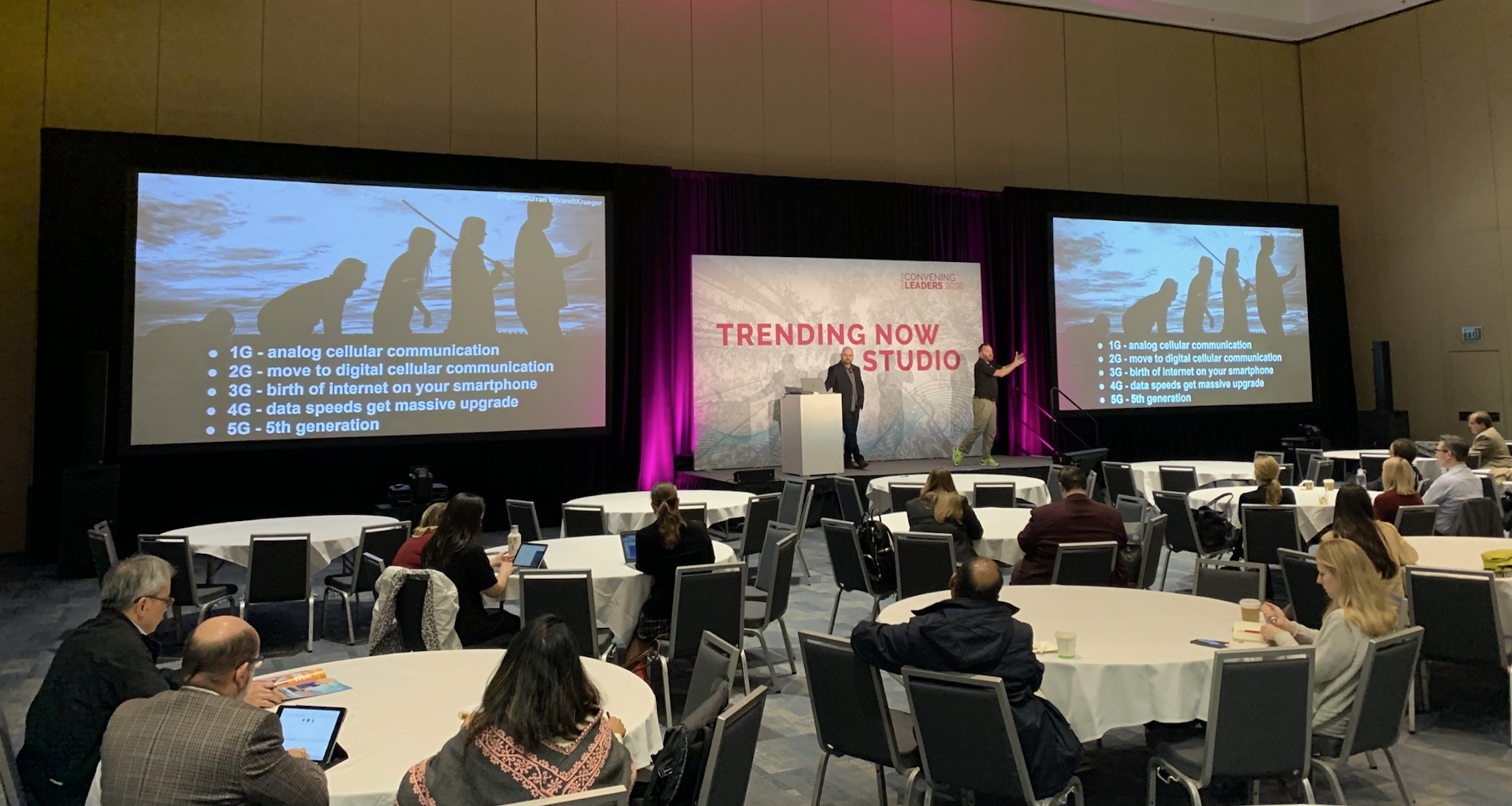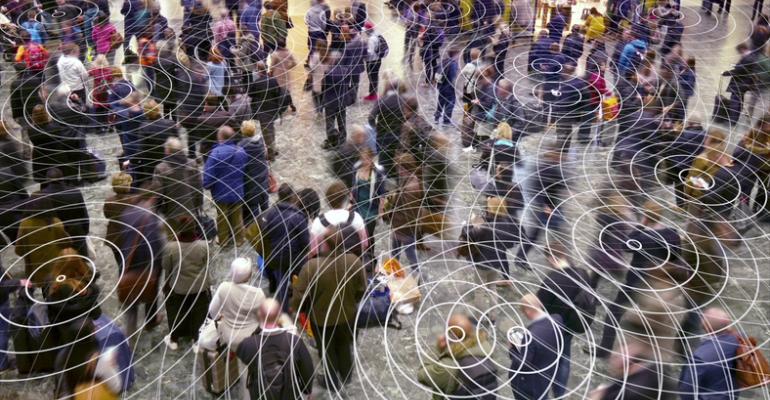The ever-expanding 5G cellular standard will significantly change how content is delivered and consumed at conferences, but planners must address a few technical and logistical elements to optimize the ocean of bandwidth that will soon be at their disposal.
Within the meetings industry, the 4G standard is what allowed content presenters to stream video wirelessly in their sessions (when a portion of the total bandwidth in a facility is segmented only for their use). In addition, attendees could check email and surf the internet far more quickly than in the prior 3G environment.
At the moment, though, the biggest telecommunications companies—AT&T, Verizon, T-Mobile, and Sprint—are furiously rolling out 5G spectrum and antennas. With 5G, the volume and speed of data transmission can be as much as 100 times greater than 4G, which is a game changer for live events. One example: Attendees can stream video without any glitches, allowing them to watch sessions taking place without being in the room.
 On the other hand, there are important factors that planners must account for. Brandt Krueger, owner of Event Technology Consulting in Minneapolis, noted in an January 2020 PCMA conference session (pictured here) that “the carriers do not all work in the same frequencies for their 5G delivery,” which makes a difference in how well each carrier’s signal travels across distances and through walls.
On the other hand, there are important factors that planners must account for. Brandt Krueger, owner of Event Technology Consulting in Minneapolis, noted in an January 2020 PCMA conference session (pictured here) that “the carriers do not all work in the same frequencies for their 5G delivery,” which makes a difference in how well each carrier’s signal travels across distances and through walls.
“The key thing to remember is that you trade range for speed,” he said. The carriers that use higher frequencies have signals that don’t penetrate walls and other objects as well, while the carriers that use lower frequencies have signals that travel farther but not as fast. “When host cities say they are 5G capable right now, planners must determine if that means they have higher speed or better range of coverage.”
Will Curran, founder of Endless Events, a New York-based AV and event production company, said that the trade-off will diminish as carriers install more 5G-capable transmission towers across cities, coupled with signal-enhancing antennas placed within meeting facilities either by venue management or, when necessary, by planners themselves. “Ask your facility if there are 5G antennas in its largest meeting and prefunction spaces,” and consider placing additional antennas in certain hallways or breakout rooms if coverage in some parts of the facility is not ideal. To determine the approximate bandwidth needs of your events, Curran’s firm has created a bandwidth calculator for planners to use.
One other factor planners must account for: 5G burns mobile-phone battery power more quickly than 4G, so providing additional charging stations in common areas might be a good idea. Planners could also mention this issue in pre-event materials and encourage attendees to bring their own power banks for on-the-go-recharging.
For a deeper dive into 5G issues, check out this New York Times article as well as this one from Cnet, titled "Will 5G Live Up to its Hype in 2021?"





